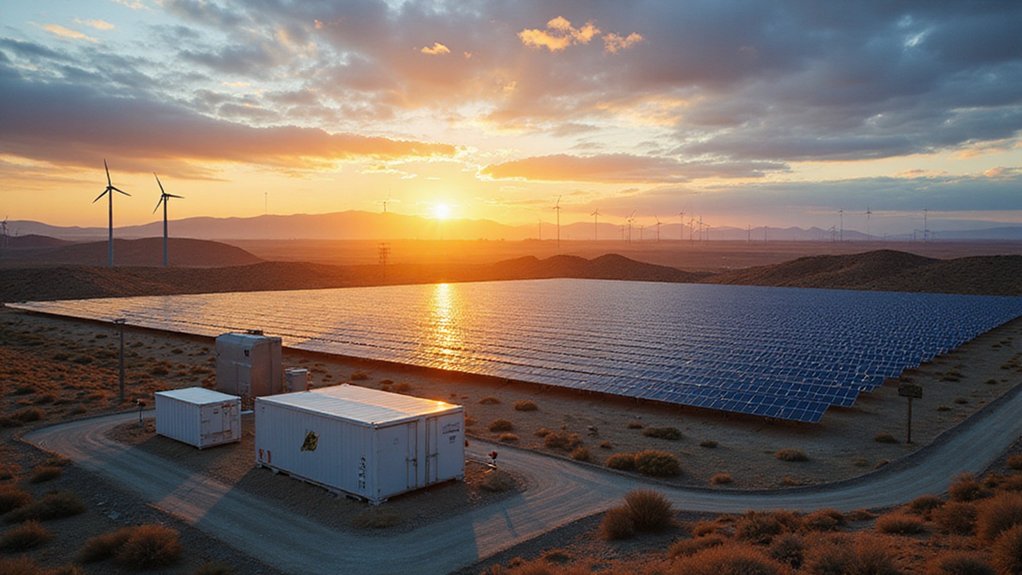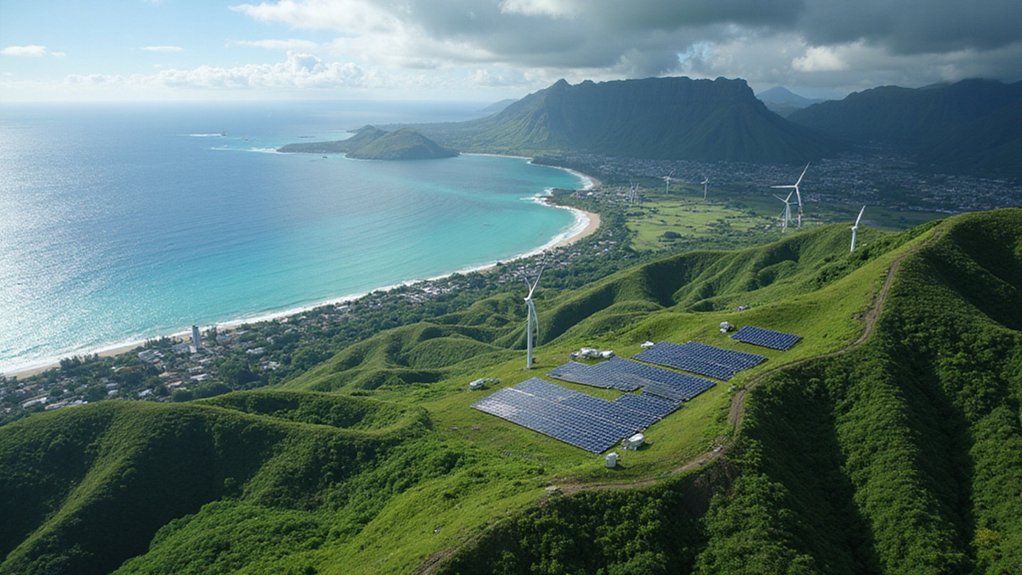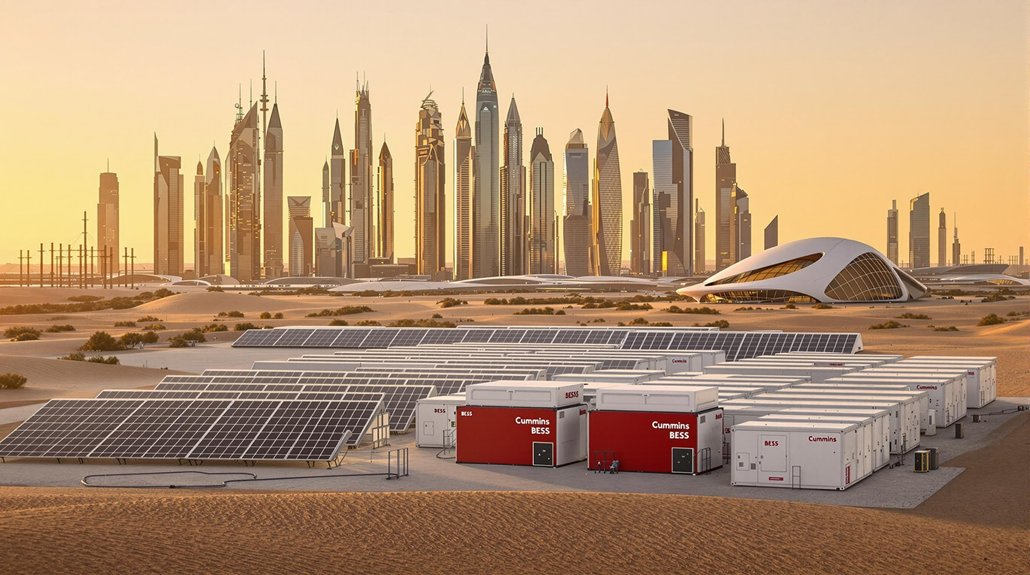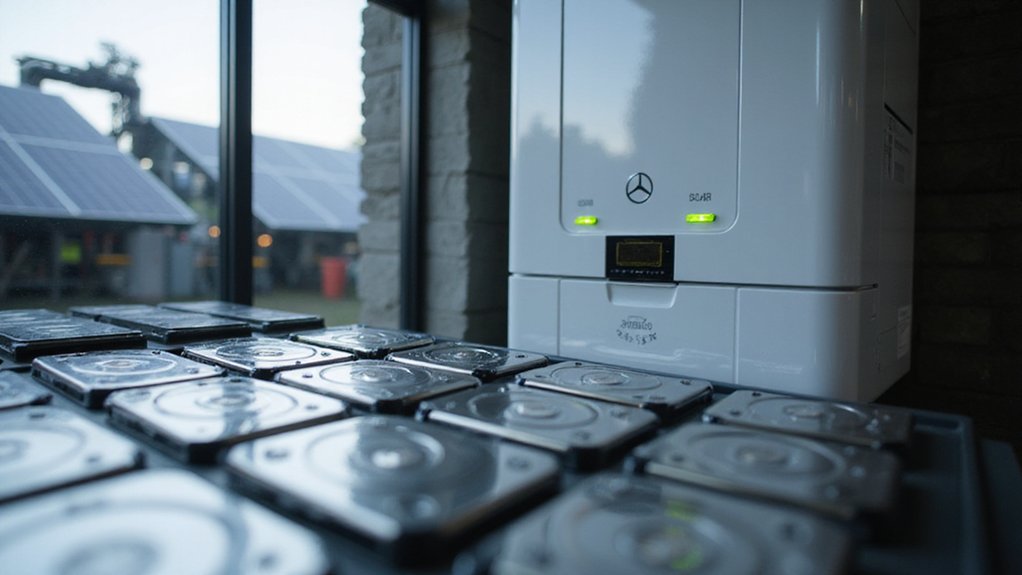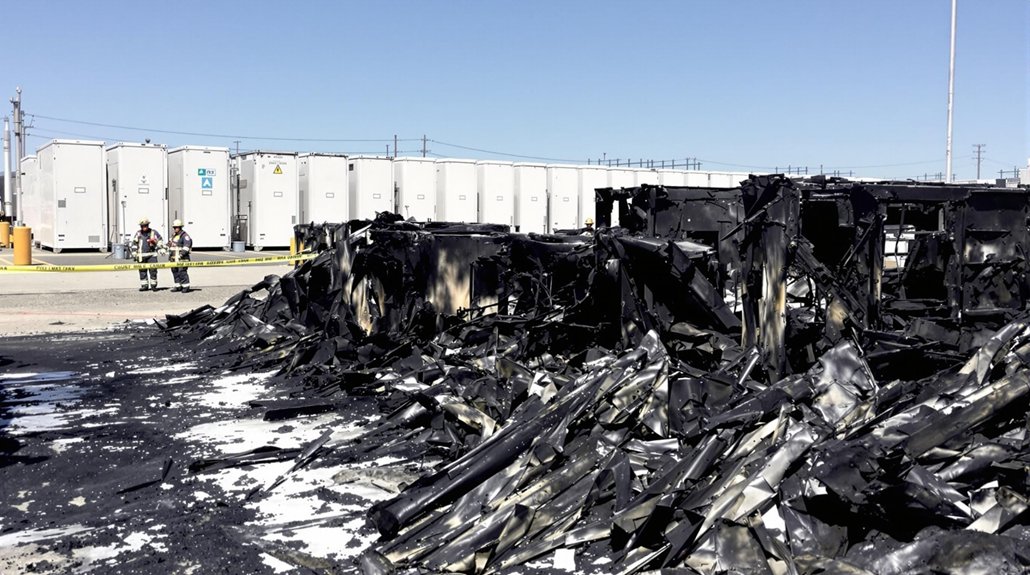California crushed energy records in 2025, hitting 100 days of 100% carbon-free electricity. Battery capacity zoomed past 10 gigawatts while rooftop solar reached 15,000 megawatts. Critics who called renewable grid integration impossible? Dead wrong. Battery storage prevented blackouts during extreme weather and enabled consecutive days of all-renewable power. Sure, electricity rates are sky-high, but the renewable transformation is unstoppable. The grid transformation story gets even juicier.
Sunshine and wind. They’re not just pleasant weather conditions in California anymore—they’re powering entire cities. 2025 brought unprecedented renewable electricity records, with solar and wind expansions pushing the Golden State into uncharted territory. Multiple spring days saw 100% renewable energy supply. Not bad for a state everyone said couldn’t possibly run on “intermittent” energy sources. California achieved 100 days of 100% carbon-free, renewable electricity for at least part of each day in 2024.
July’s brutal heat wave put this renewable transformation to the test. Batteries stepped up. Big time. The state’s utility-scale battery capacity now exceeds 10 gigawatts—up from basically nothing a decade ago. These massive power banks supplied over 25% of peak demand during extreme weather, keeping the lights on when critics predicted darkness.
Battery capacity explosion means the grid no longer buckles during heat waves. Critics’ blackout predictions now seem laughably outdated.
Rooftop solar deserves serious credit too. With installations reaching almost 15,000 megawatts, these distributed energy systems have completely transformed California’s electricity demand curves. They’ve fundamentally flatlined peak load growth for two decades. Remember when experts predicted we’d need another 15,000 megawatts of capacity by now? Yeah, didn’t happen. These installations also help save all consumers money by offsetting grid expansion costs that would otherwise be passed on to ratepayers.
Battery storage deployments doubled between 2023 and 2025. The timing couldn’t have been better. During 2025’s record two-week heat wave, this distributed network prevented what would’ve been certain blackouts just a few years ago. The state’s lithium-ion systems have demonstrated remarkable energy density advantages over traditional storage technologies.
But it’s not all sunshine and rainbows. California electricity rates hit record highs, and utility spending is the culprit. Grid infrastructure costs skyrocketed 130-300% over a decade. Utilities secured massive loans—PG&E alone borrowed $15 billion—and guess who’s paying? Ratepayers, of course.
Utilities and regulators are feeling the heat from critics. The state updated Building Energy Efficiency Standards for 2025, while simultaneously reducing Net Energy Metering incentives for new rooftop solar adopters. Talk about mixed signals.
Still, California continues setting benchmarks for renewable energy integration. Battery storage has significantly changed the game. The renewable transformation isn’t coming—it’s already here. And it’s just getting started.
References
- https://www.energy.ca.gov/data-reports/reports/integrated-energy-policy-report-iepr/2025-integrated-energy-policy-report
- https://www.energy.ca.gov/programs-and-topics/programs/building-energy-efficiency-standards/2025-building-energy-efficiency
- https://www.newenergynexus.com/blog/state-of-clean-energy-in-2025-six-insights-from-californias-clean-energy-leaders/
- https://calssa.org/press-releases/2025/2/18/new-data-reveals-the-real-source-of-record-high-energy-rates-in-california-is-out-of-control-utility-spending-and-profits
- https://revel-energy.com/2025-caifornia-energy-costs-now-is-the-time-for-solar/
